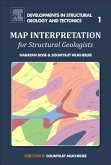A pioneering textbook that balances descriptive classification and quantitative analysis of geological structures using tools from calculus and mechanics. Coordinated laboratory exercises available online help students to consolidate learning and put it into practice, preparing them for graduate studies and careers as professional geoscientists.
'This textbook is an excellent introduction to quantitative structural geology, showing the formation of structures using both calculus and mechanics. The book bridges the gap between descriptive structural geology books and more advanced textbooks requiring a continuum mechanics background, and will be a 'must' for all geoscientists who wish to learn how to interpret geological structures based on fundamental physical principles.' Bernhard Grasemann, University of Vienna








